Characteristics and evaluation methods of Meiji NPS
Meiji NPS is a framework for evaluating the nutritional value of food based on the nutritional components,
and is aimed at helping resolve nutritional health issues.
The system was designed by considering the differences in dietary habits between Japan and other countries,
as well as the health issues faced by each life stage of the Japanese population.
Meiji NPS Features
Features of the Meiji NPS
Background and Design of the Meiji NPS
We published our new approach to nutrition as the “Meiji Nutrition Statement.” One of the goals of this statement is to help resolve existing nutritional health issues. To achieve this goal, we believe it is important to address and integrate into this system the nutritional health issues faced by individuals and consider the special dietary habits of each region. Based on this, we have designed the Meiji Nutrition Profiling System (Meiji NPS) as a unique tool to help address current nutrition issues.
A Nutrition Profiling System (NPS) is a framework for scientifically evaluating the nutritional value of food, and it is necessary to design the system keeping specific targets in mind. Therefore, based on the goals of the “Meiji Nutrition Statement,” the Meiji NPS is characterized primarily by its consideration of the differences between Japanese and western dietary habits. Furthermore, in order to address the health issues that affect people of various age groups in Japan, we have developed the Meiji NPS algorithm in consultation with numerous experts.
Meiji NPS Overview
The Meiji NPS is an innovative framework that aims to help improve various nutritional health issues, with the aim of supporting people at all stages of life. We are taking on the challenge of designing an appropriate NPS for each stage of life, including younger children (3 to 5 years), older children (6 to 11 years), adults (12 to 64 years), and older adults (65 years and older). Accordingly, we have developed four models—the Meiji NPS for Younger Children, the Meiji NPS for Older Children, the Meiji NPS for Adults, and the Meiji NPS for Older Adults.*1~4 Each model has been designed with reference to official guidelines and data*5 published by public organizations and academic associations. In the future, we plan to expand our support by developing NPSs for the global markets where Meiji products are sold.
The Meiji NPS for Adults
The Meiji NPS for Adults is designed to address the two major nutritional health issues faced by Japanese adults: lifestyle-related diseases and the thinness of young women. The score is based on the amounts of specific nutritional components being defined, including nutritional components that should be limited (sugar, saturated fatty acids, salt, etc.) and components that should be recommended (protein, dietary fiber, etc.).
The Meiji NPS for Older Adults
The Meiji NPS for Older Adults is designed with special consideration given to frailty, a major health issue for the older adults in Japan. With specific emphasis given to preventing frailty, the nutritional recommendations are based on the Meiji NPS for Adults, eliminating the recommendation for limiting saturated fatty acids.
The Meiji NPS for Younger and Older Children
The Meiji NPS for Younger and Older Children is designed with special consideration given to growth and development, a major health issue for the younger and older children in Japan. It evaluates the same nutritional components as the Meiji NPS for Adults, but the reference values used in the calculations have been adjusted to meet the specific nutritional requirements of younger and older children.
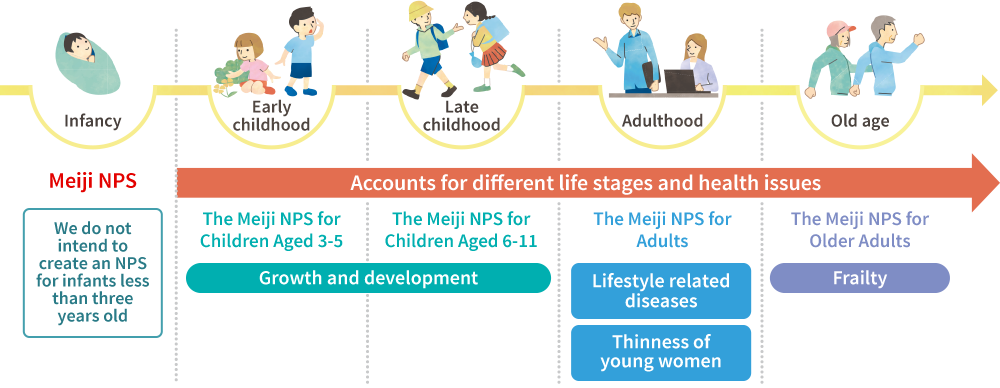
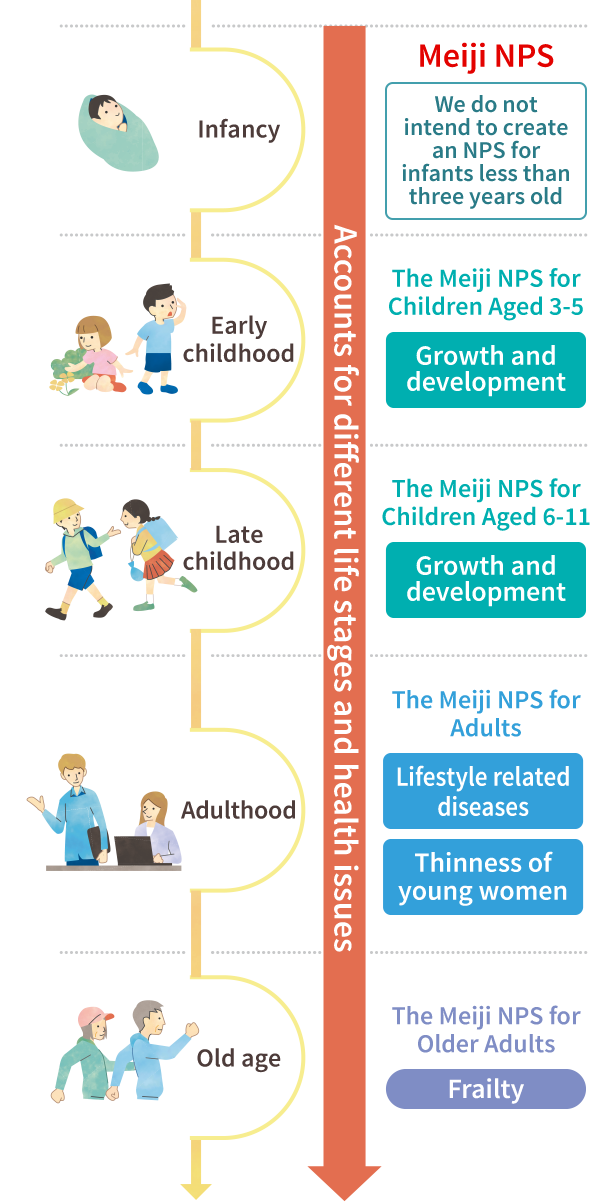
-
*1Announcing the Meiji Nutritional Profiling System (Meiji NPS) to evaluate nutrients in food products and help to develop products that help consumers more easily choose foods that offer higher nutritional value (https://www.meiji.com/global/news/2023/pdf/230630_01.pdf)
-
*2Development and Validation of the Meiji Nutritional Profiling System (Meiji NPS) for Evaluating the Nutritional Value of Foods Published in the International Academic Journal “Nutrients” (https://www.meiji.com/global/news/2024/pdf/240415_01.pdf)
-
*3Development and Validation of the Meiji Nutritional Profiling System (Meiji NPS) per Serving Size Considering Japanese Diet-Published in the International Journal “Nutrients” - (in Japanese) (https://www.meiji.co.jp/corporate/pressrelease/2024/0912_01/index.html)
-
*4Meiji Develops the Meiji NPS for Children | Nutritional Value Scoring of Food to Enable Numerical Evaluations - The first nutrition evaluation method for children that accounts for childhood growth and development in Japan - Aiming to provide products with high nutritional value and that incorporate the nutrients and food groups that are essential to children - (https://www.meiji.com/global/news/2025/pdf/250819_01.pdf)
-
*5Dietary Reference Intakes for Japanese (2020)
National Health and Nutrition Survey (2019)
Health Japan 21
Healthy diet (WHO)
Planetary health diet (EAT-Lancet Commission)
Our Goals
We have designed the Meiji NPS as a tool to measure the healthiness of food products, with the aim of helping to resolve nutritional health issues for Japanese people at different life stages, while also considering the differences between Japanese and western dietary habits. We will use the Meiji NPS to develop and improve our products to provide higher nutritional value. In the future, we will also strive to provide customers with valuable information such as the nutritional value of each product evaluated by the Meiji NPS and suggestions to help them choose healthier foods. We aim to benefit our customers and society through these initiatives to address nutritional health issues.
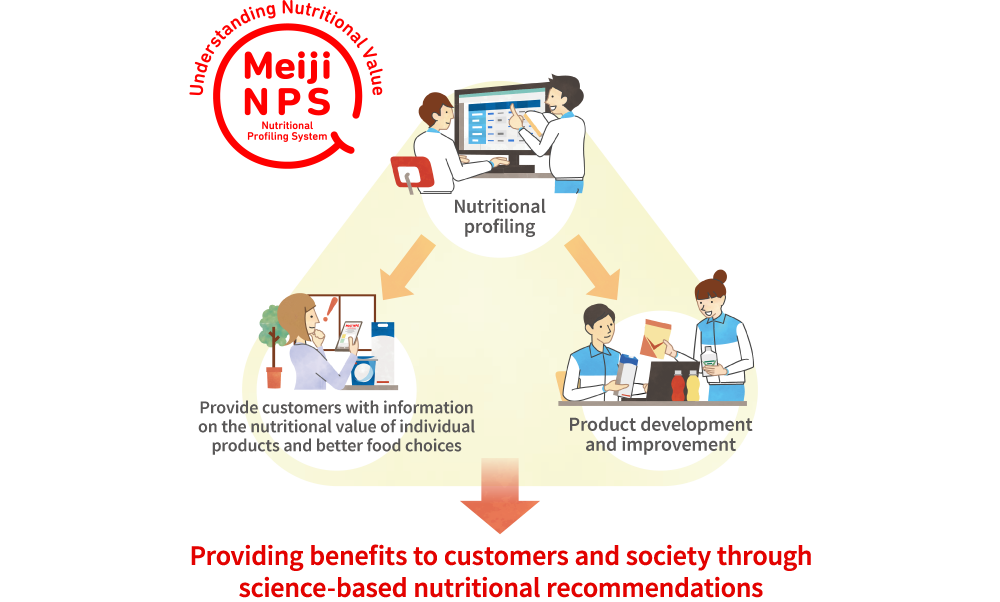
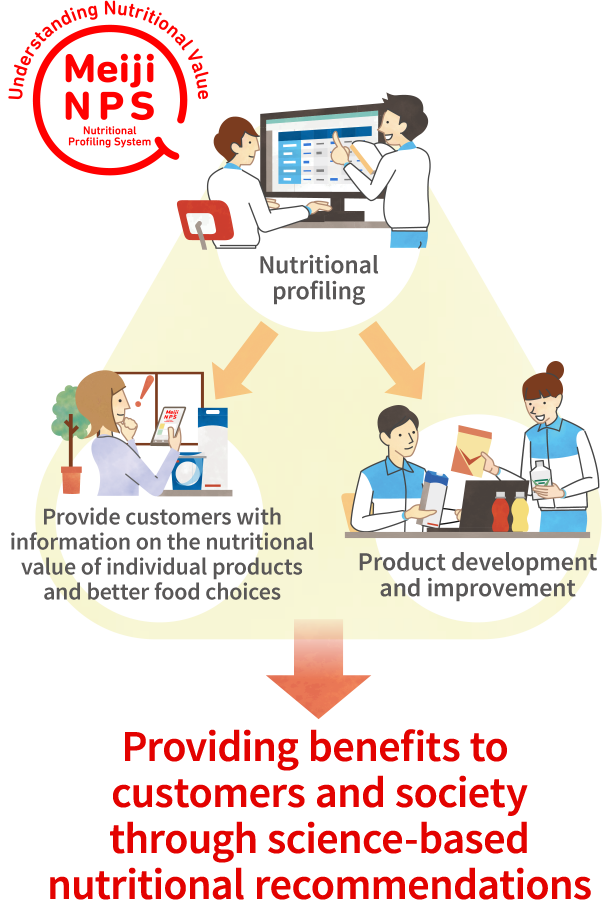
Evaluation Methods
Meiji NPS for Adults Evaluation Methods
About the Meiji NPS for Adults
The Meiji NPS for Adults is a framework for scientifically evaluating the nutritional value of foods, taking into consideration lifestyle-related diseases and the underweight problem faced by young Japanese women.*6 *7 The Meiji NPS evaluates foods based on serving size (the amount consumed at one time) and the amounts of several nutritional components. Specifically, the nutritional value is evaluated based on the amounts of recommended nutritional components (e.g. protein, dietary fiber), food groups (e.g. vegetables, dairy products), and nutritional components that should be limited (e.g. salt, sugar) per serving size.
The nutritional value of the food is indicated and visualized by a score on a scale of 0.5 to 5.0. Higher scores indicate a higher nutritional value for the food.
-
*6WAKAYAMA Ryota et al. Development and Validation of the Meiji Nutritional Profiling System (Meiji NPS) to Address Dietary Needs of Adults and Older Adults in Japan. Nutrients, 2024, 16(7):936.
-
*7WAKAYAMA, Ryota et al. Development and Validation of the Meiji Nutritional Profiling System per Serving Size. Nutrients, 2024, 16(16):2700.
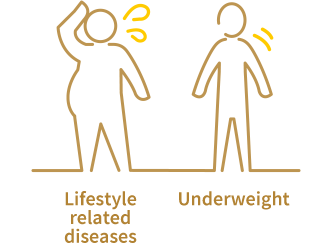
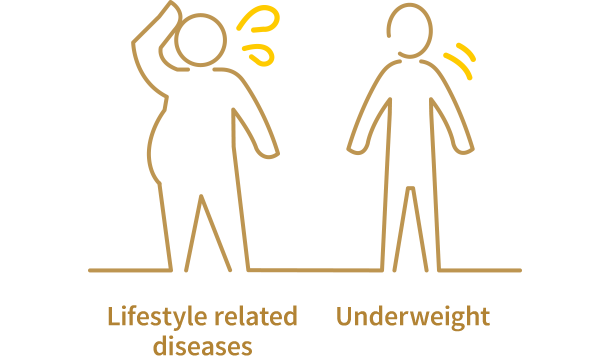
Evaluation by serving size
Meiji NPS is evaluated and scored based on the nutritional content per serving size (the amount consumed at one time). Evaluation based on serving size is closer to the actual amount consumed and is easy for consumers to use. The serving size in Meiji NPS is according to the reference value and ordinary serving value for Japanese people.
Generally, reference values are indicated on food packaging and are used to show consumers how much of a particular food or ingredient they should consume each day. On the other hand, the ordinary serving value refers to the standard amount of commonly consumed products. It is used in various situations, such as in nutritional management and practice. Taking these points into consideration, examples of serving sizes in the Meiji NPS are shown to the right.
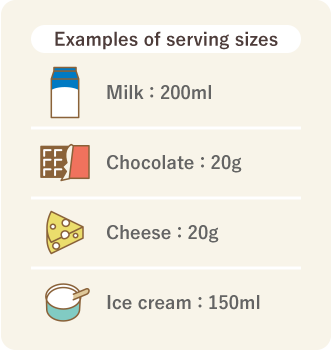
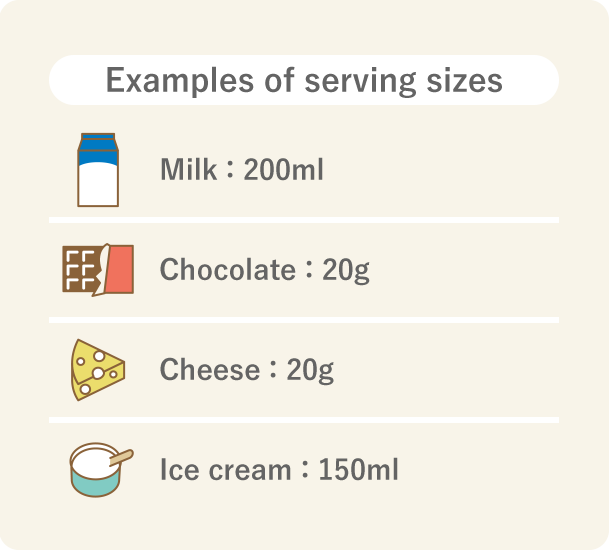
Nutritional components and food groups used for evaluation
The Meiji NPS for Adults is evaluated based on the following nutritional components and food groups contained in various foods. These are developed with reference to official guidelines and data published by public organizations and academic associations.
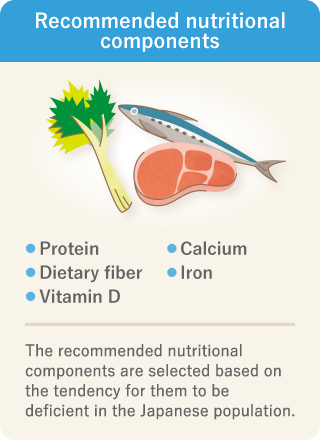
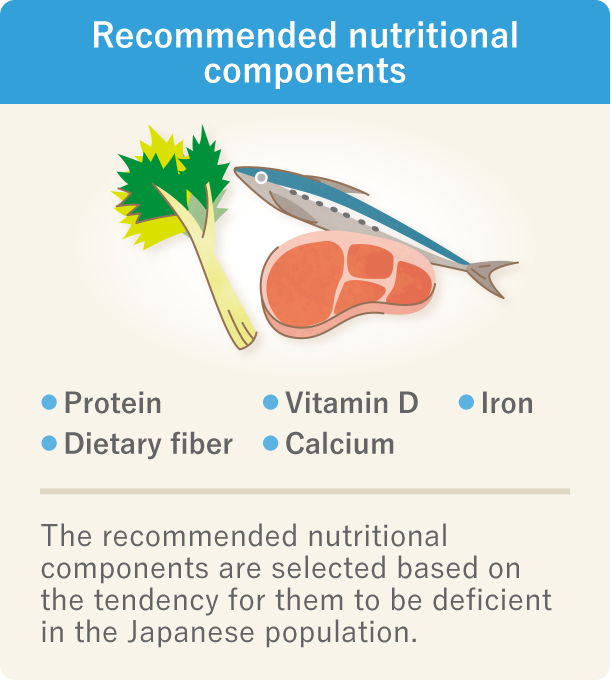
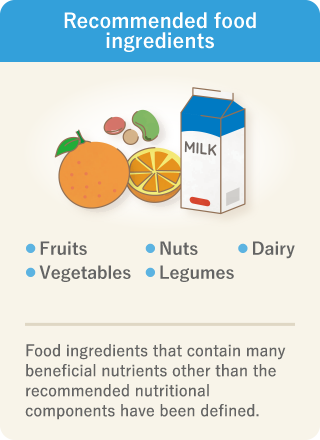
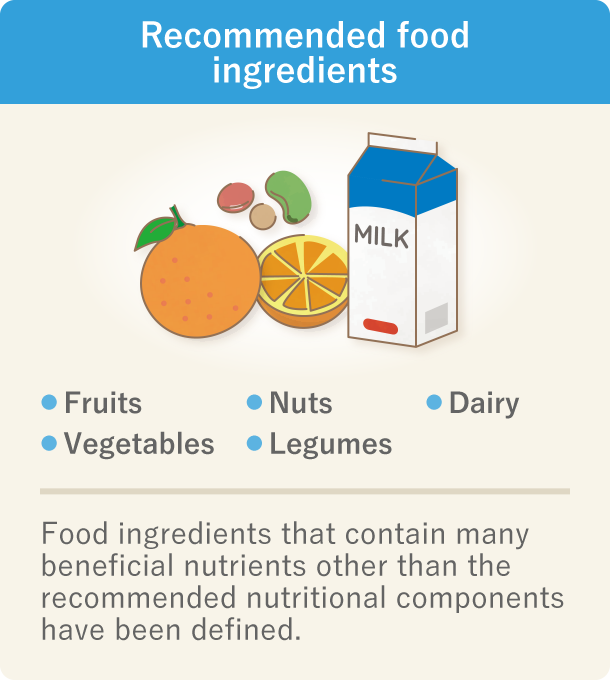
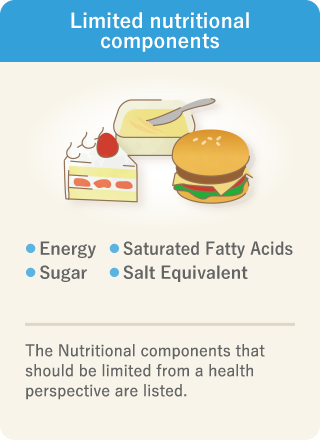
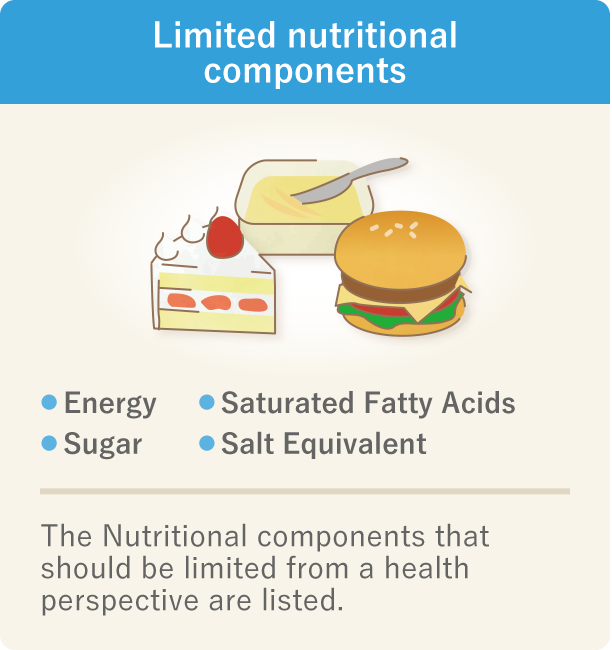
Scoring based on evaluation using the Meiji NPS for Adults

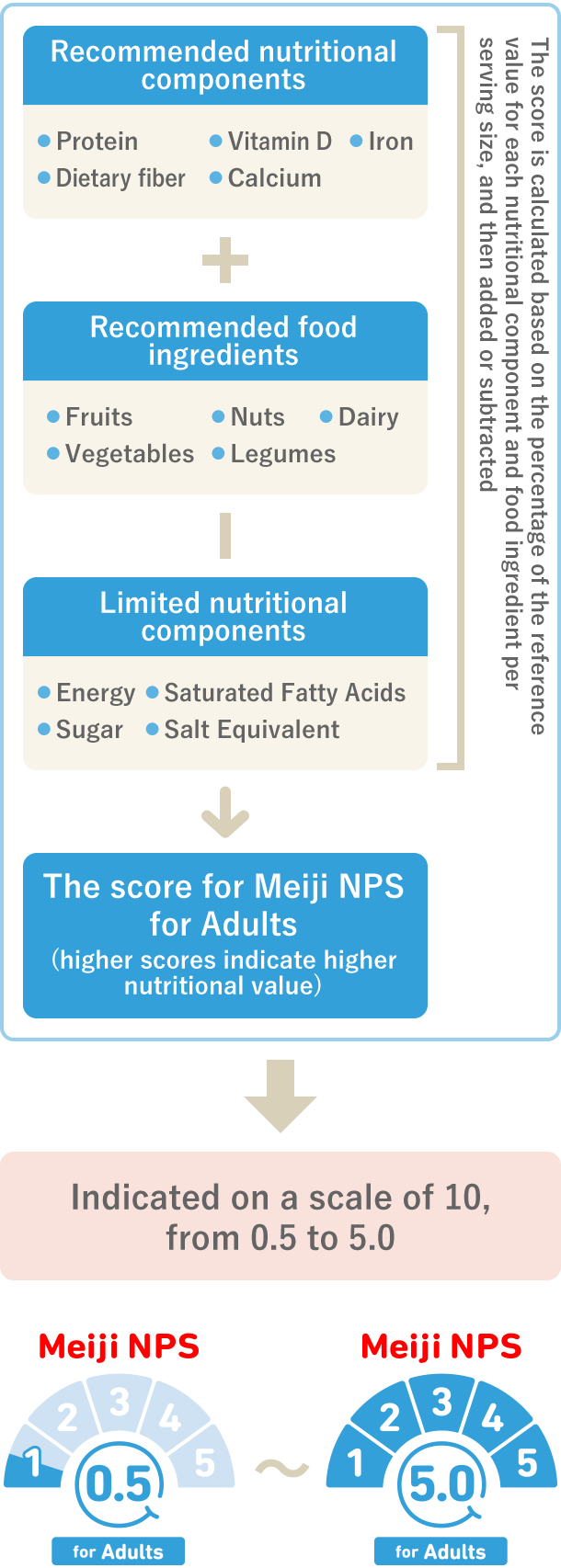
The score is based on the amount of nutritional components and food groups per serving size. The score is higher when the amount of recommended nutritional components and food groups are higher, and the amount of the limited nutritional components is lower. To make the nutritional value easier to understand, the score is finally calculated on a scale of 0.5 to 5.0 in 10 levels.
In addition, an epidemiological study has shown that a high score on the diet index evaluated using the Meiji NPS for Adults is associated with low values for various lifestyle-related disease indicators*8, which means that choosing products with high scores on the Meiji NPS for Adults corresponds to higher nutritional value.
-
*8YU, Tao et al. The relationship between the dietary index based Meiji nutritional profiling system for adults and lifestyle-related diseases: A predictive validity study from the National Institute for Longevity Sciences—Longitudinal Study of Aging. Frontiers in Nutrition, 2024, 11: 1413980.
Meiji NPS for Older Adults Evaluation Methods
About the Meiji NPS for Older Adults
The Meiji NPS for Older Adults is a scientific evaluation method for the nutritional value of foods, with special consideration given to frailty among the older generation in Japan.*9*10 It was designed based on Meiji NPS for Adults, but iron and saturated fatty acids were removed from the nutritional component list because of their lack of relationship with frailty based on previous evidence. On the other hand, vitamin D, which is considered important for the prevention of frailty, was given a higher value in Meiji NPS for Older Adults.
The NPS for Older Adults is based on serving size, and the results of this evaluation are shown a score on a scale of 0.5 to 5.0. Higher scores indicate a higher nutritional value for the food.
-
*9WAKAYAMA, Ryota et al. Development and Validation of the Meiji Nutritional Profiling System (Meiji NPS) to Address Dietary Needs of Adults and Older Adults in Japan. Nutrients, 2024, 16(7):936.
-
*10WAKAYAMA, Ryota et al. Development and Validation of the Meiji Nutritional Profiling System per Serving Size. Nutrients, 2024, 16(16):2700.
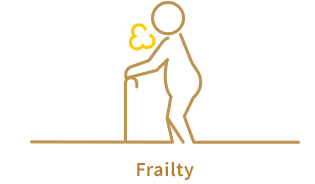

Nutritional components and food groups used for evaluation
The following nutritional components and food groups are used as part of Meiji NPS for Older Adults evaluations. These were developed with reference to official guidelines and data published by public organizations and academic associations.
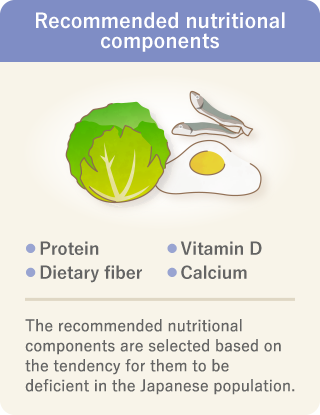
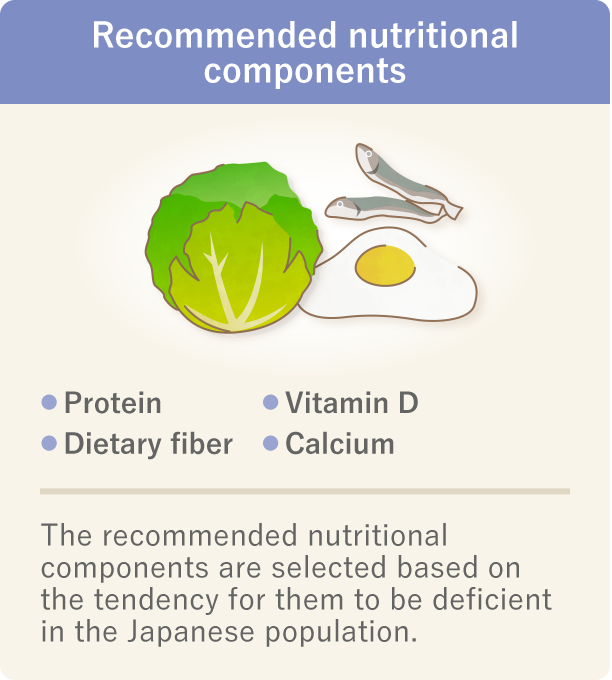
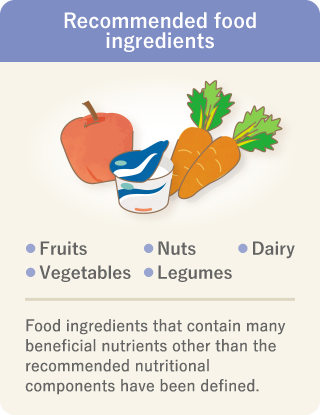
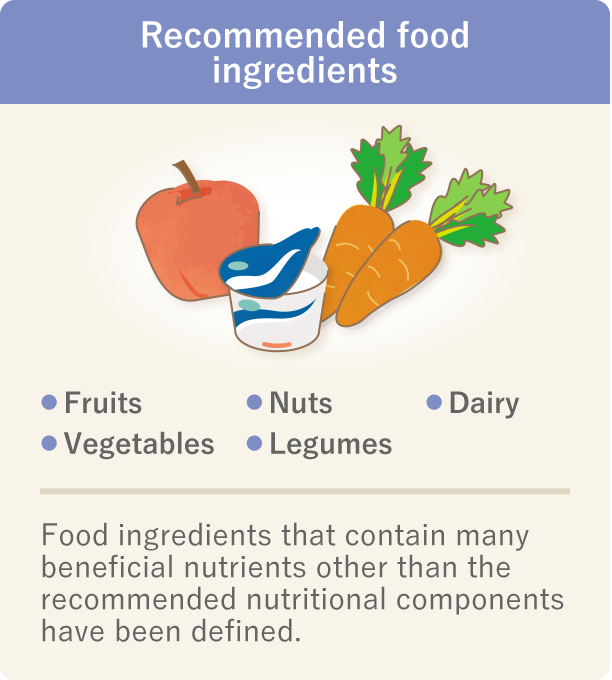
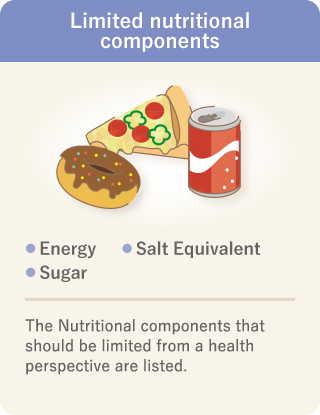
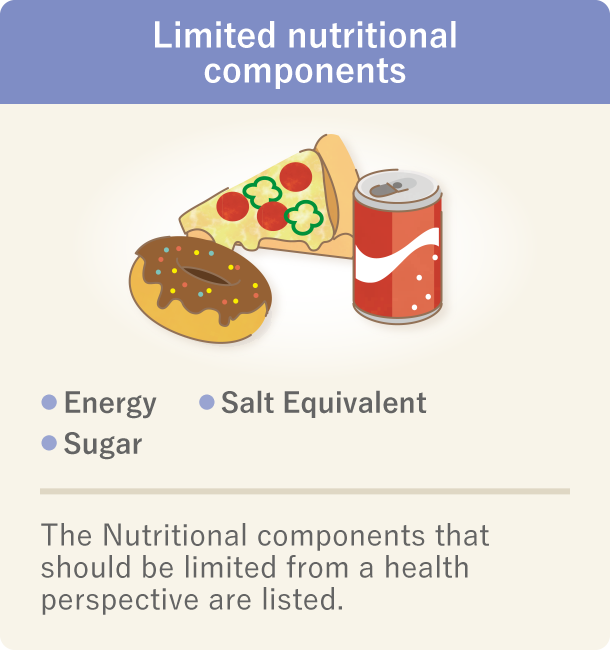
Scoring based on evaluation using the Meiji NPS for Older Adults
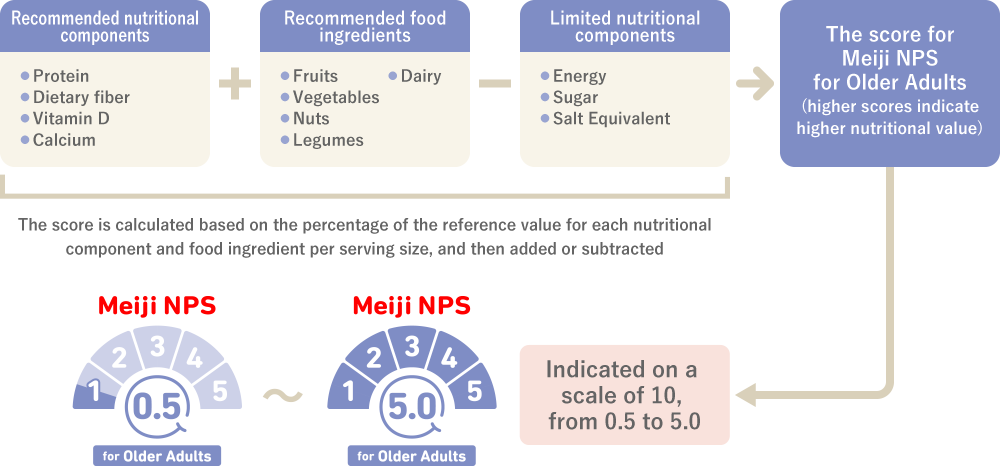
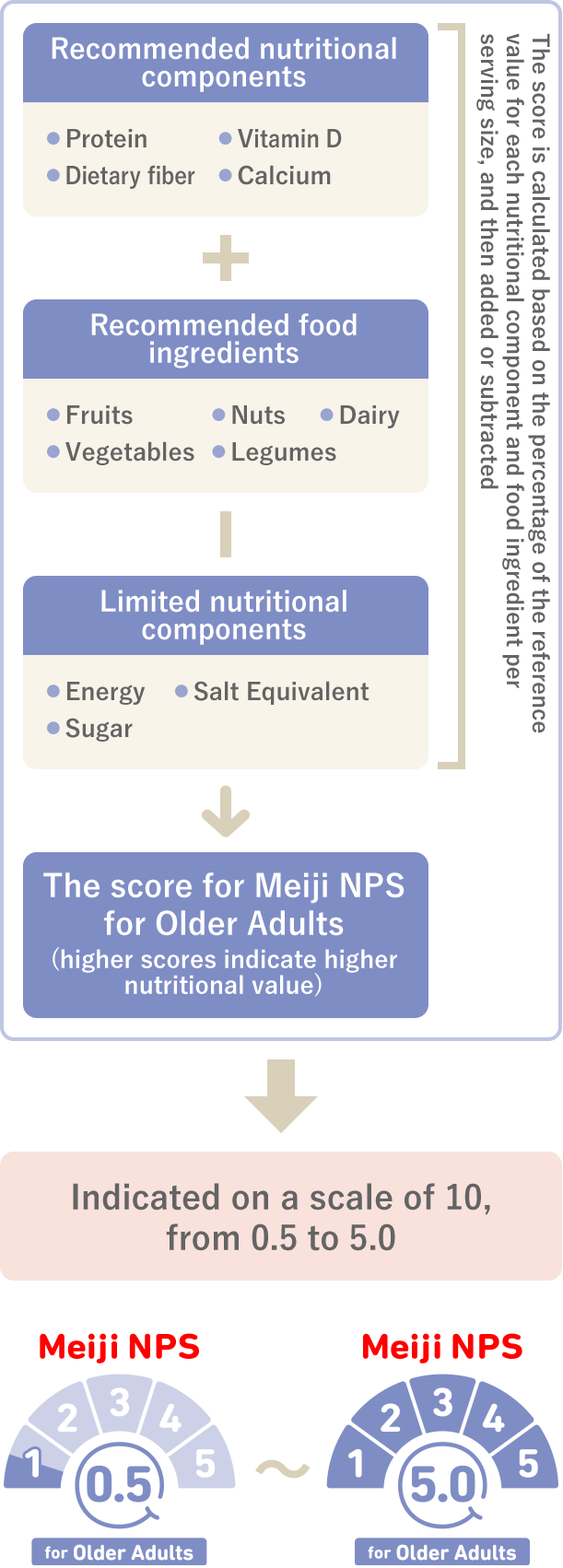
The Meiji NPS for Older Adults is calculated in the same way as the Meiji NPS for Adults, based on the amount of nutritional components and food groups per serving size. The score is higher when the amount of recommended nutritional components and food groups are higher, and the amount of the limited nutritional components is lower. To make the nutritional value easier to understand, the score is finally calculated on a scale of 0.5 to 5.0 in 10 levels.
Meiji NPS for Younger and Older Children Evaluation Methods
About the Meiji NPS for Younger and Older Children
The Meiji NPS for Younger and Older Children is a scientific evaluation method for the nutritional value of foods, with special consideration given to growth and development among children in Japan.*11 It was designed based on the Meiji NPS for Adults, but the reference values used in the calculations have been adjusted to meet the specific nutritional requirements of younger and older children.
The Meiji NPS for Younger and Older Children is based on serving size, and the results of this evaluation are shown as a score on a scale of 0.5 to 5.0. Higher scores indicate a higher nutritional value for the food.
-
*11WAKAYAMA Ryota et al. Development and validation of the Meiji Nutritional Profiling System for children. Frontiers in Nutrition, 2025, 12, 1611286.


Nutritional components and food groups used for evaluation
The following nutritional components and food groups are used as part of the Meiji NPS for Younger and Older Children evaluations. These were developed with reference to official guidelines and data published by public organizations and academic associations.
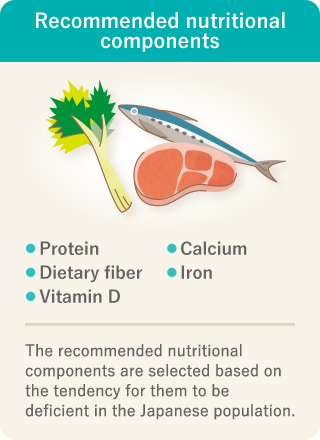
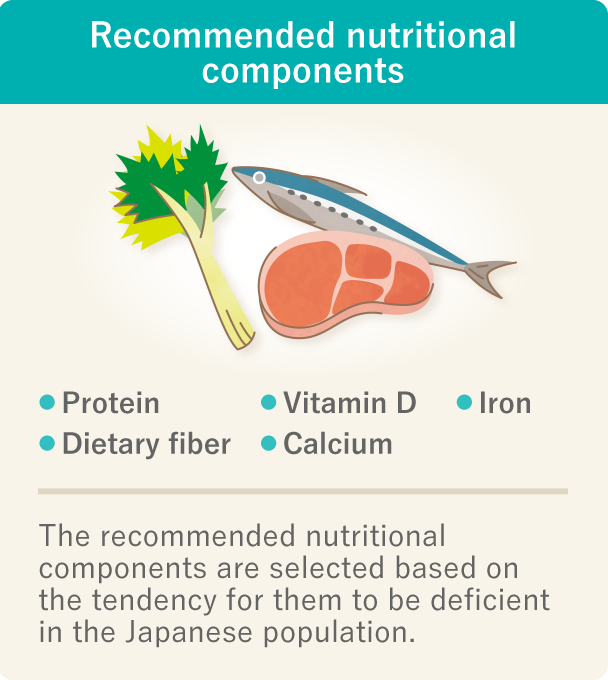

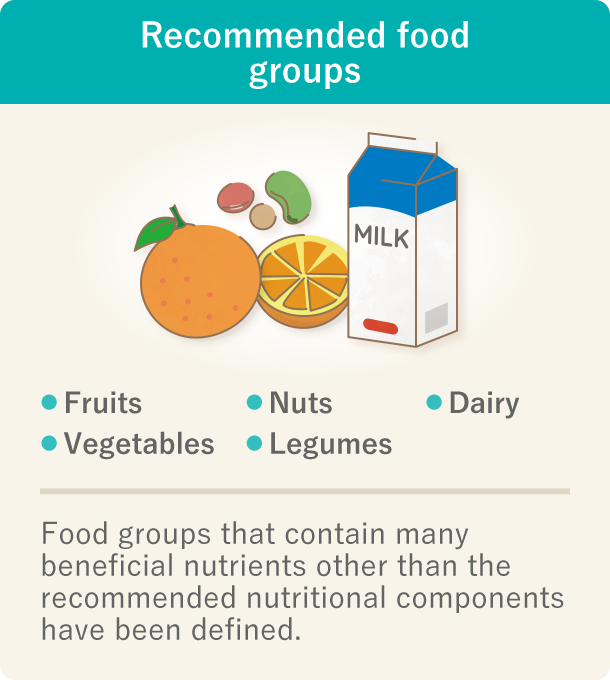
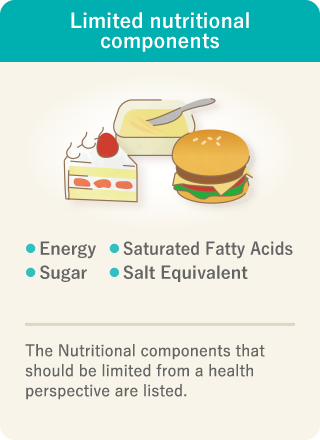
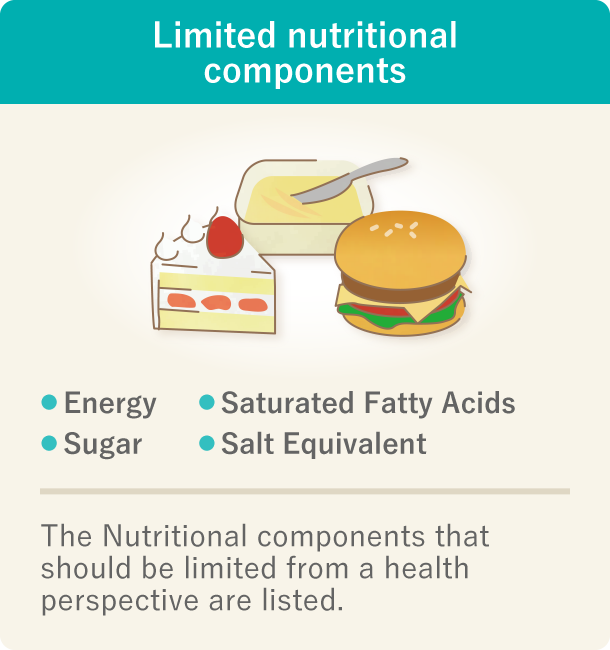
Scoring based on evaluation using the Meiji NPS for Younger and Older Children
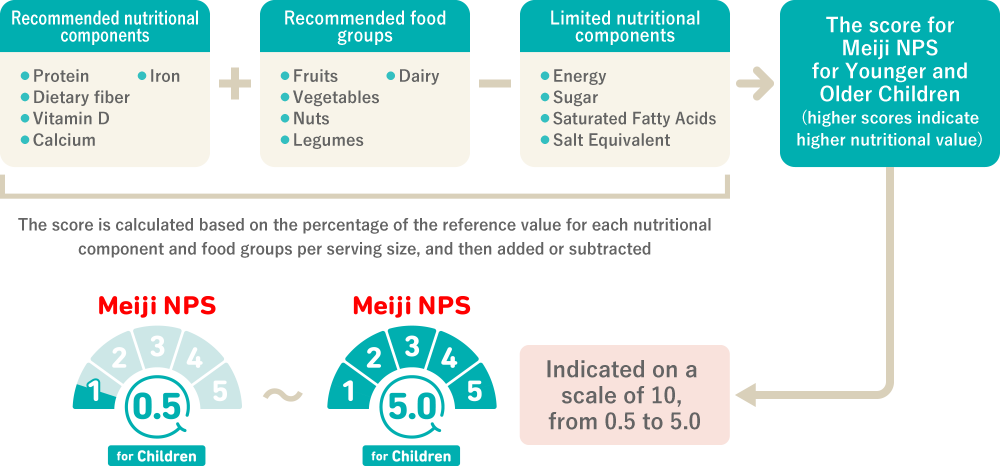

The Meiji NPS for Younger and Older Children is calculated in the same way as the Meiji NPS for Adults, based on the amount of nutritional components and food groups per serving size. The score is higher when the amount of recommended nutritional components and food groups are higher, and the amount of the limited nutritional components is lower. To make the nutritional value easier to understand, the score is finally calculated on a scale of 0.5 to 5.0 in 10 levels.
Examples of Meiji NPS Evaluations
Evaluated food products
As an example, we use the evaluation of milk and cheese. The data for the foods used in the evaluation are shown in the table. The serving sizes were 200ml for milk and 20g for cheese. The results of the evaluation of milk and cheese using the Meiji NPS are shown below.
Information about milk and cheese for evaluation
| Food names |
Category in Japanese Food Standard Composition Table 2020 | Serving size |
Notes | |
|---|---|---|---|---|
| Food number | Food group | |||
| Milk | 13003 | Whole milk | 200ml | Calculated as 100% dairy ingredients |
| Cheese | 13040 | Processed cheese | 20g | Calculated as 85% dairy ingredients |

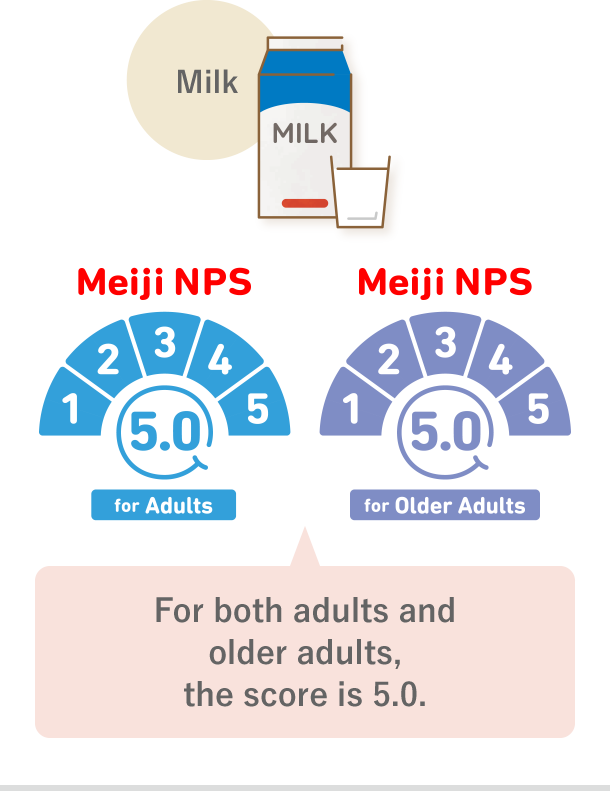

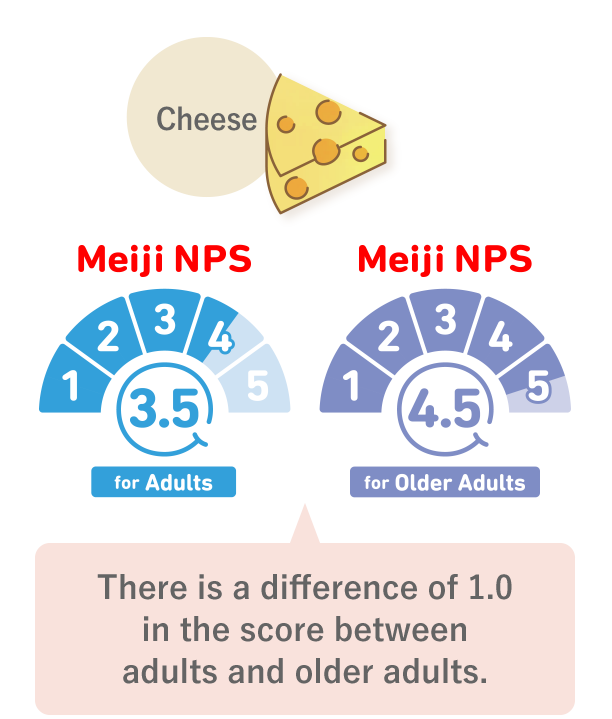
The differences in nutritional needs of adults and older adults are reflected in these scores.
Milk is rich in protein and calcium, which are recommended nutritional components in the Meiji NPS. With a score of 5.0 for both the Meiji NPS for Adults and for Older Adults, milk is can be expected to contribute to the prevention of both lifestyle-related diseases in adults and frailty among older adults.
Cheese is made from milk and contains protein, calcium and vitamin D, but also contains nutrients to limit such as salt and saturated fatty acids. As a result, the NPS score for adults was 3.5, and the NPS score for older adults was 4.5. The cheese production process involves removing water, and the nutrients contained in the milk are concentrated in the cheese. The results from Meiji NPS for Older Adults was higher than the results from Meiji NPS for Adults, because it is assumed to be a food suitable for older adults, who tend to eat less, as it is rich in nutrients that can be expected to contribute to the prevention of frailty, such as protein, calcium, and vitamin D.
The Meiji NPS for Adults was developed with the aim of preventing lifestyle-related diseases and thinness among young women, while the NPS for Older Adults was developed with the aim of preventing frailty among older adults. By evaluating foods using scales with different objectives according to life stages, some foods, such as milk, will have the same score for both NPSs, but others, such as for cheese, where the scores are different.
The nutritional value of foods is not uniform, and it is important to use appropriate evaluation methods that match the characteristics and health needs of the target population. The Meiji NPS will continue to contribute to the solution of various nutritional and health issues, closely aligned with a wide range of life stages.